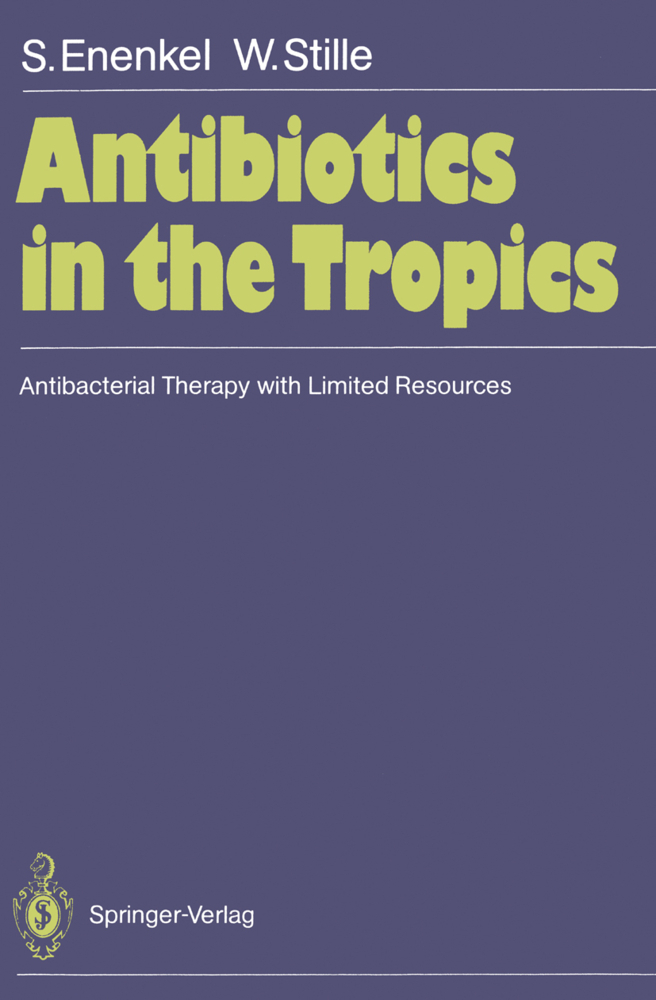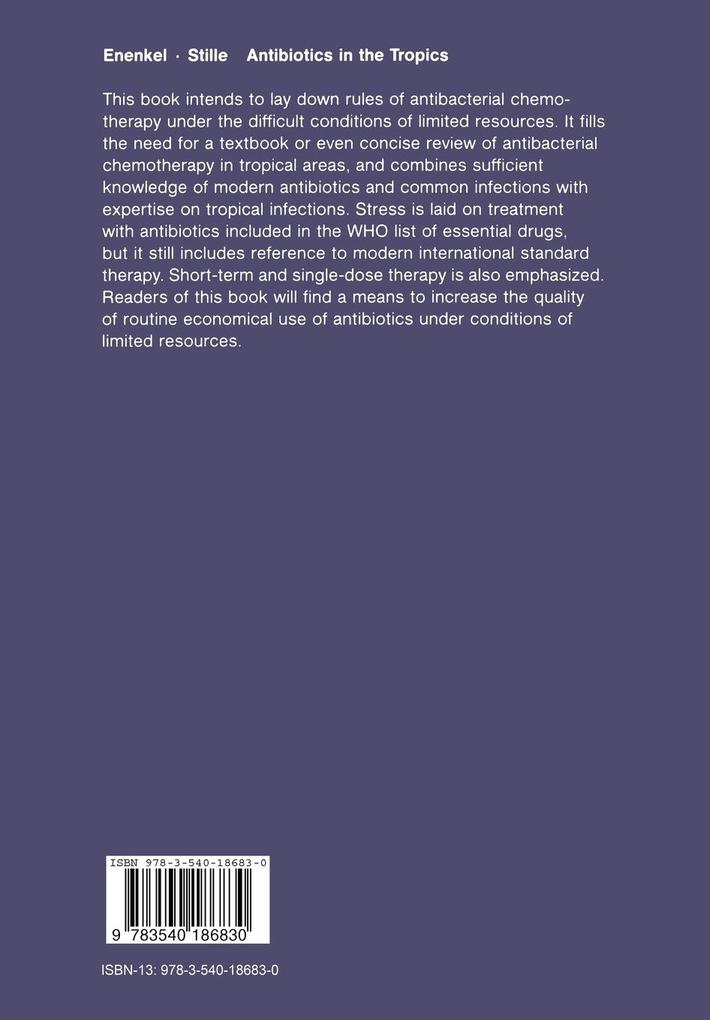
Zustellung: Mo, 28.04. - Mi, 30.04.
Versand in 2 Tagen
VersandkostenfreiBestellen & in Filiale abholen:
International textbooks on infectious diseases and antibacterial chemotherapy are usually written for readers in North America and Europe. In many ways, they are not appropriate for the prob lems encountered in developing countries. This book, in contrast, intends to define the rules of antibacterial chemotherapy practised under conditions of limited resources. It is meant for everyone con cerned with the use of antibiotics in developing countries, includ ing doctors, medical assistants, pharmacists, officials in health mio isteries, and medical students. Throughout the book, treatment recommendations are made for 1 antibiotics from the WHO list of essential drugs. For example, em phasis has therefore been put upon chloramphenicol as a stable, unexpensive and widely available oral agent suitable for the treat ment of severe bacterial infections like septicemia and meningitis. So-called "international chemotherapy" with modem cephalospor ins and acylaminopenicillins has been outlined for comparison. Since it is the aim of the book to base treatment recommenda tions on data from developing countries, many data on the etiology of common bacterial infections in developing countries have also been included. Most of the data are from African, English-speak ing developing countries, but references have been made to the lit erature on South East Asia, India or Papua New Guinea, where appropriate. On the other hand, pertinent data were not available in every instance, so that several statements and recommendations had to be made as "best guess". The authors are aware of these imperfections and will welcome comments from the readers.
Inhaltsverzeichnis
I. Principles of Antibiotic Therapy. - 1 The Range of Antibiotics Available. - 2 Choice of Antibiotics. - 3 Bacterial Resistance in Developing Countries. - 4 Administration of Antibiotics. - 5 Dosage of Antibiotics. - 6 Side Effects and Contraindications. - 7 Combinations of Antibiotics. - 8 Costs of Antibiotics. - II. Treatment of Infections and Infectious Diseases. - 9 Septicemia. - 10 Infective Endocarditis. - 11 Purulent Pericarditis. - 12 Infections of the Central Nervous System. - 13 Infections of the Respiratory Tract. - 14 Infections of the Gastrointestinal Tract. - 15 Infections of the Musculoskeletal System. - 16 Skin and Wound Infections. - 17 Sexually Transmitted Diseases. - 18 Obstetric and Gynecological Infections. - 19 Genitourinary Infections. - 20 Infections of the Ear, Nose, and Throat. - 21 Eye Infections. - 22 Salmonella Infections. - 23 Rickettsial Diseases. - 24 Leptospirosis. - 25 Brucellosis. - 26 Relapsing Fever. - 27 Anthrax. - 28 Plague. - 29 Listeria Infections. - 30 Melioidosis. - 31 Nonvenereal Treponematoses. - 32 Mycobacterial Infections. - 33 Actinomycosis. - 34 Nocardiosis. - 35 Rare Bacterial Diseases: Bartonellosis, Erysipeloid, and Ratbite Fever. - 36 Fungal Infections. - 37 Treatment of AIDS.
Produktdetails
Erscheinungsdatum
09. Mai 1988
Sprache
englisch
Seitenanzahl
344
Autor/Autorin
Sabine Enenkel, Wolfgang Stille
Verlag/Hersteller
Produktart
kartoniert
Abbildungen
XII, 328 p. 5 illus.
Gewicht
595 g
Größe (L/B/H)
244/170/19 mm
Sonstiges
Paperback
ISBN
9783540186830
Entdecken Sie mehr
Bewertungen
0 Bewertungen
Es wurden noch keine Bewertungen abgegeben. Schreiben Sie die erste Bewertung zu "Antibiotics in the Tropics" und helfen Sie damit anderen bei der Kaufentscheidung.










